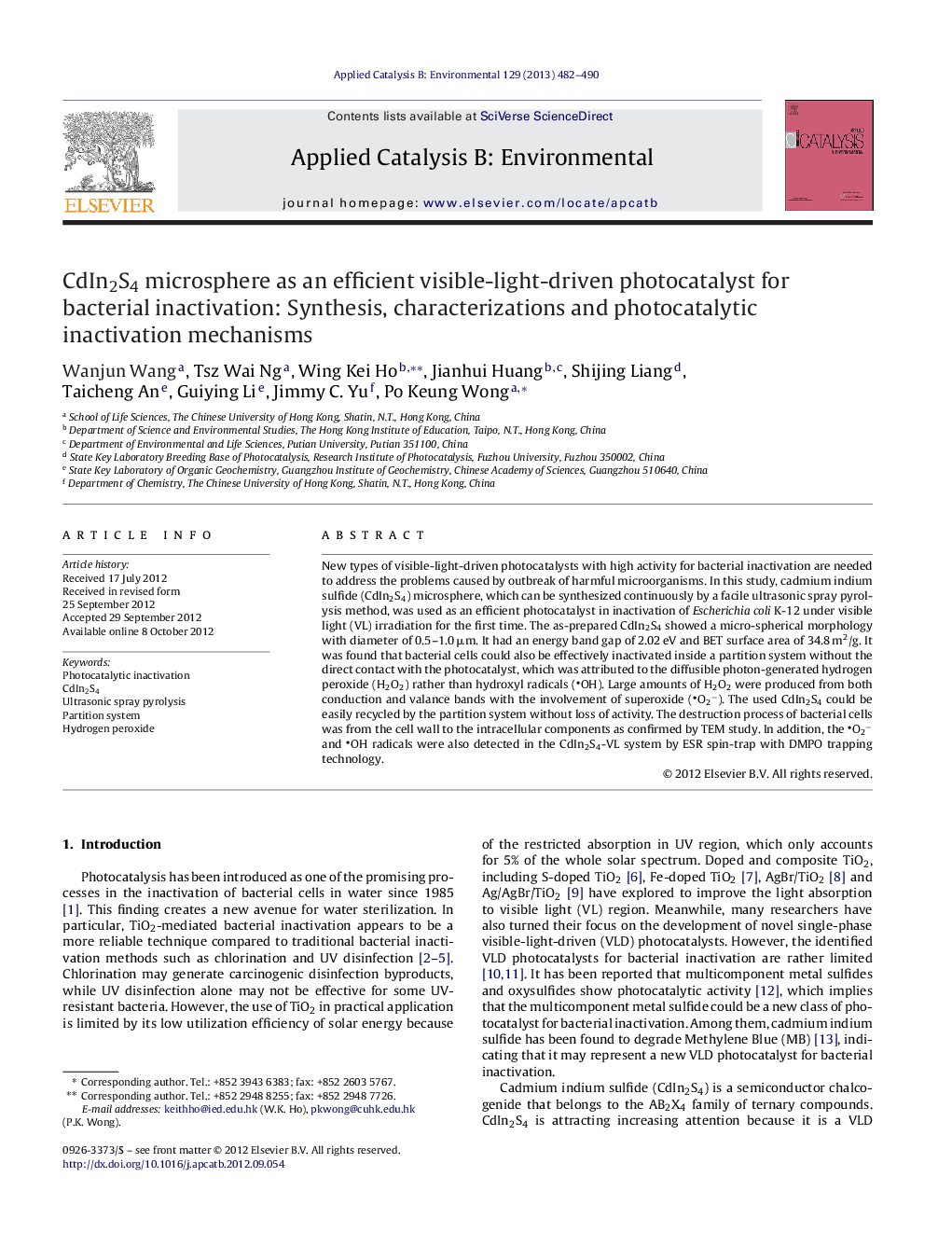| کد مقاله | کد نشریه | سال انتشار | مقاله انگلیسی | نسخه تمام متن |
|---|---|---|---|---|
| 46030 | 46428 | 2013 | 9 صفحه PDF | دانلود رایگان |

New types of visible-light-driven photocatalysts with high activity for bacterial inactivation are needed to address the problems caused by outbreak of harmful microorganisms. In this study, cadmium indium sulfide (CdIn2S4) microsphere, which can be synthesized continuously by a facile ultrasonic spray pyrolysis method, was used as an efficient photocatalyst in inactivation of Escherichia coli K-12 under visible light (VL) irradiation for the first time. The as-prepared CdIn2S4 showed a micro-spherical morphology with diameter of 0.5–1.0 μm. It had an energy band gap of 2.02 eV and BET surface area of 34.8 m2/g. It was found that bacterial cells could also be effectively inactivated inside a partition system without the direct contact with the photocatalyst, which was attributed to the diffusible photon-generated hydrogen peroxide (H2O2) rather than hydroxyl radicals (OH). Large amounts of H2O2 were produced from both conduction and valance bands with the involvement of superoxide (O2−). The used CdIn2S4 could be easily recycled by the partition system without loss of activity. The destruction process of bacterial cells was from the cell wall to the intracellular components as confirmed by TEM study. In addition, the O2− and OH radicals were also detected in the CdIn2S4-VL system by ESR spin-trap with DMPO trapping technology.
Figure optionsDownload as PowerPoint slideHighlights
► CdIn2S4 microsphere was synthesized by a facile ultrasonic spray pyrolysis method.
► Bacterial cells could be inactivated without direct contact with CdIn2S4.
► Large amount of H2O2 was produced with the involvement of O2−.
► A partition system was used to easily recycle and reuse the photocatalyst.
► Destruction of bacterial cells started from cell wall to intracellular components.
Journal: Applied Catalysis B: Environmental - Volume 129, 17 January 2013, Pages 482–490